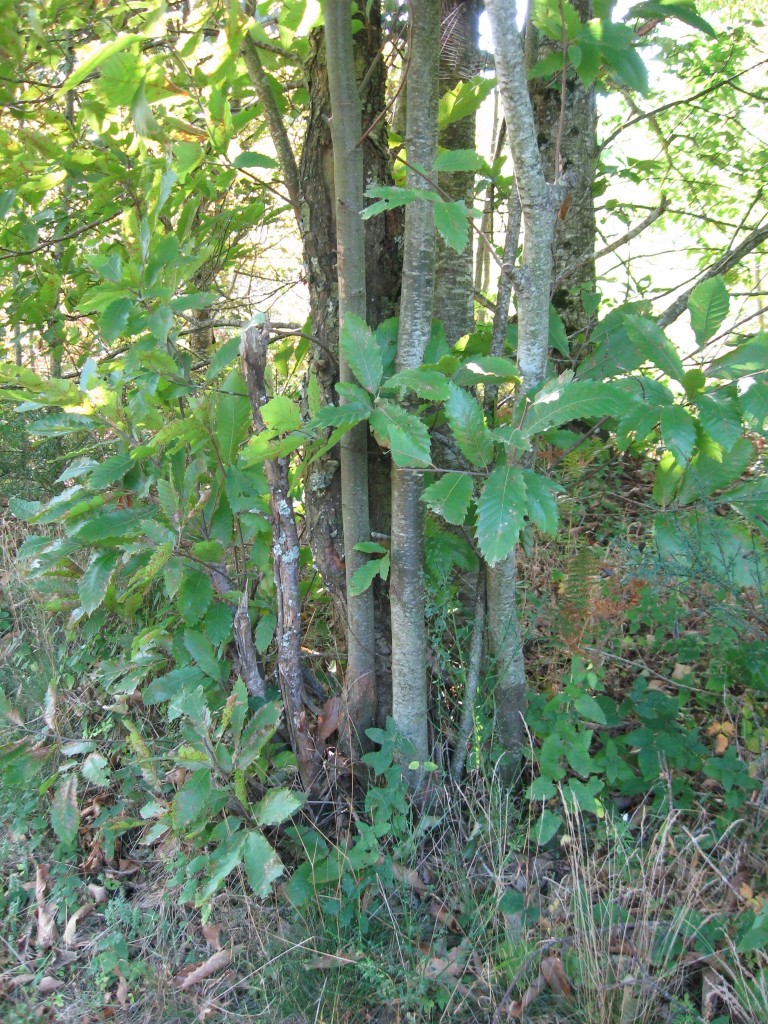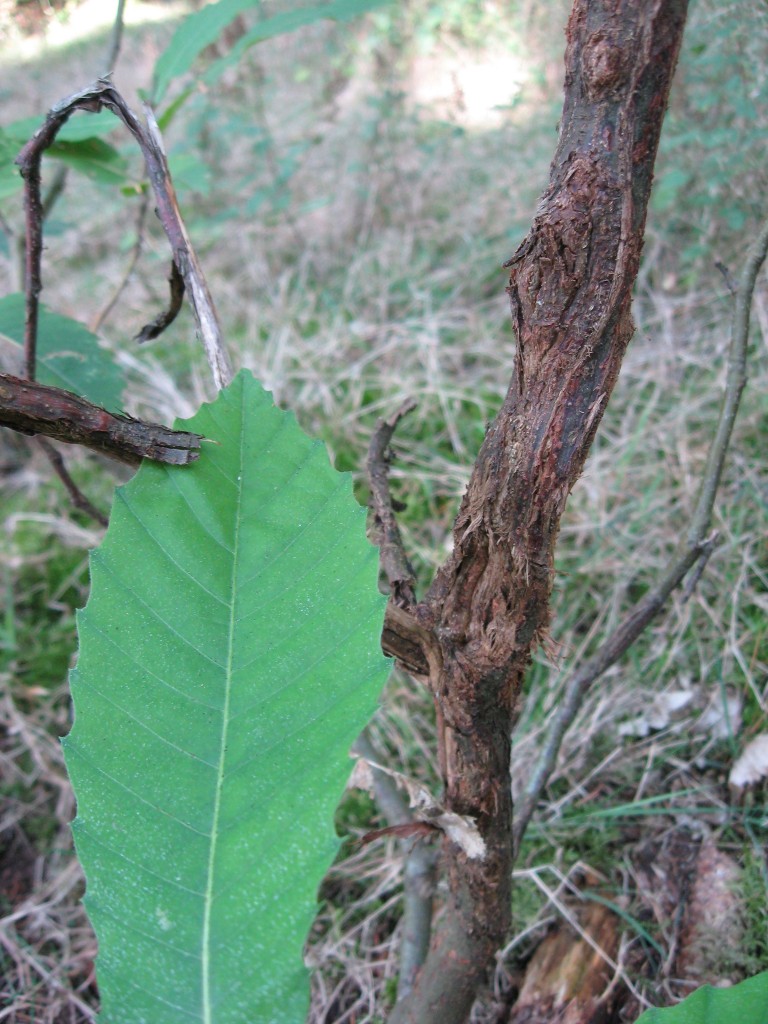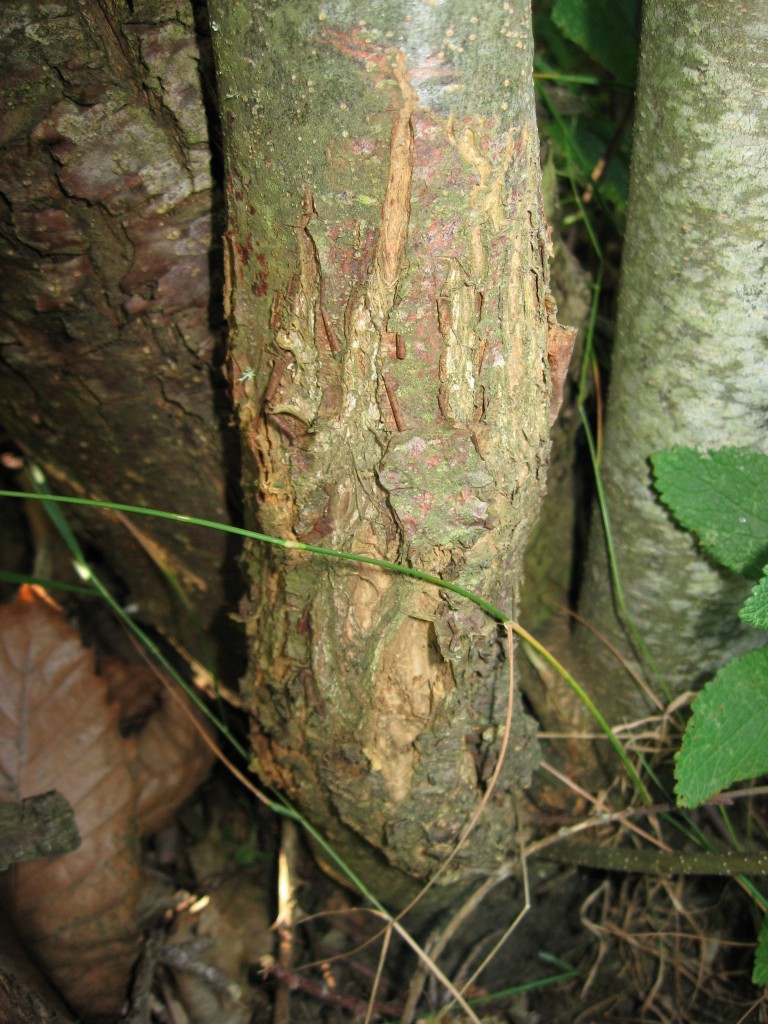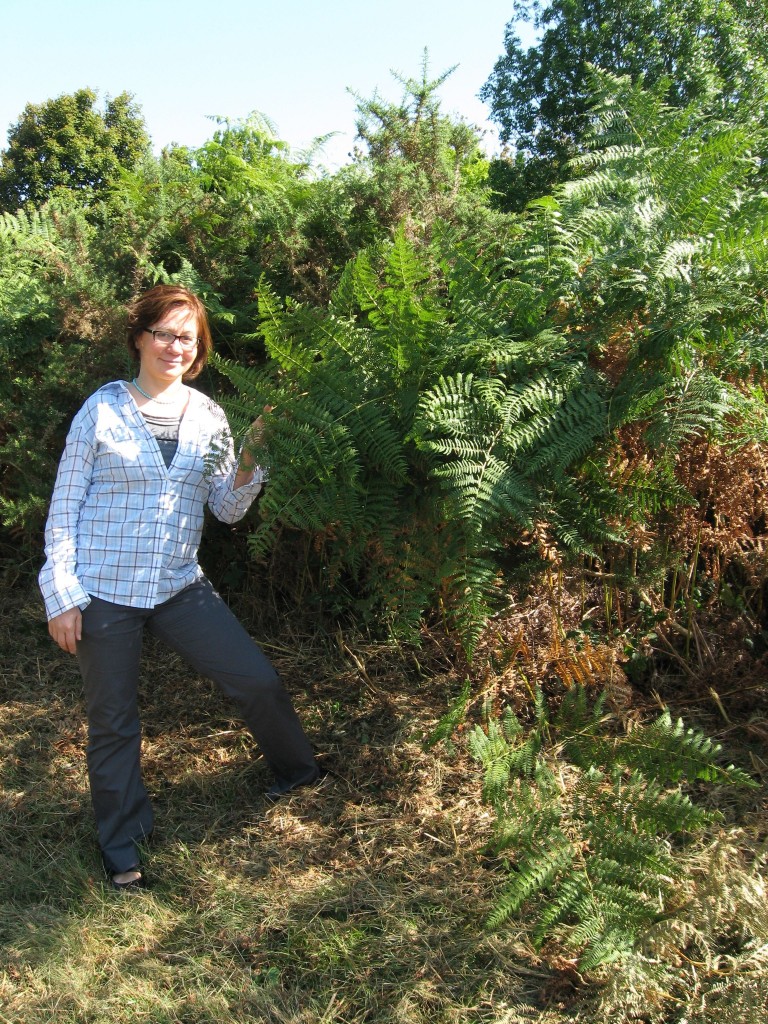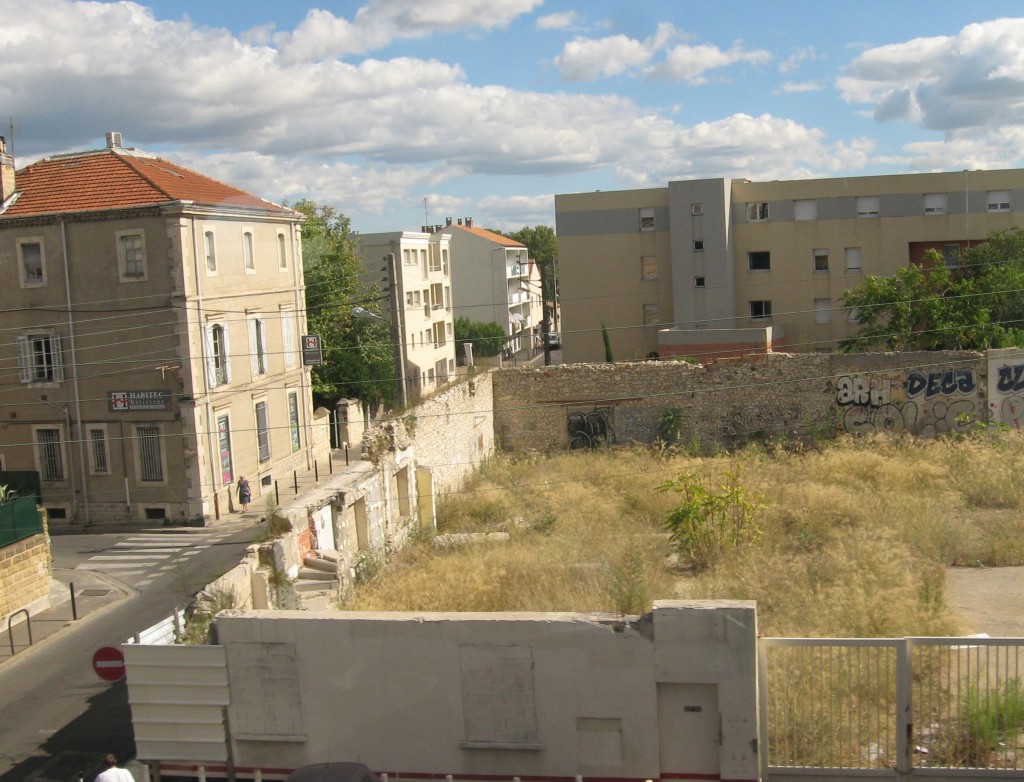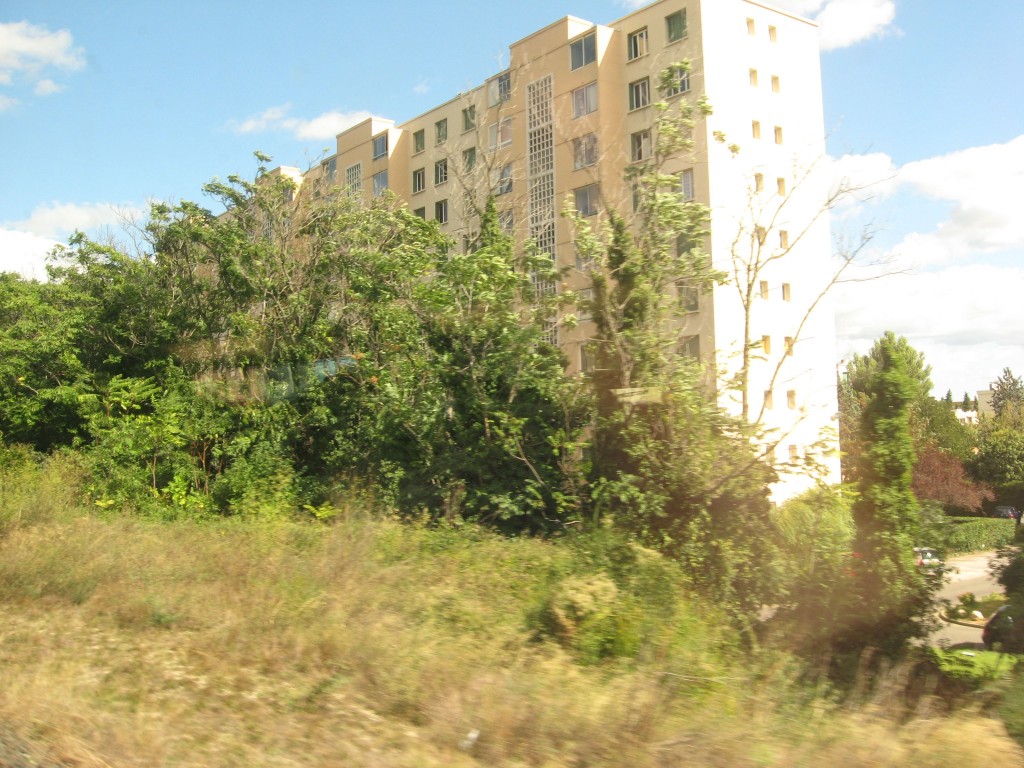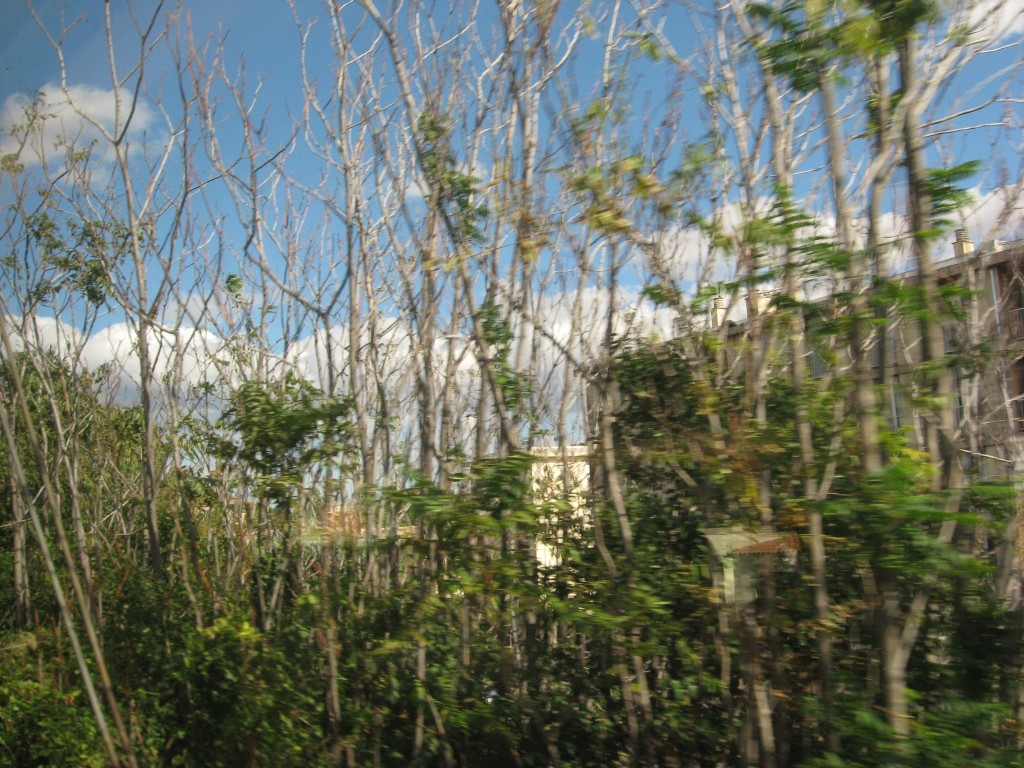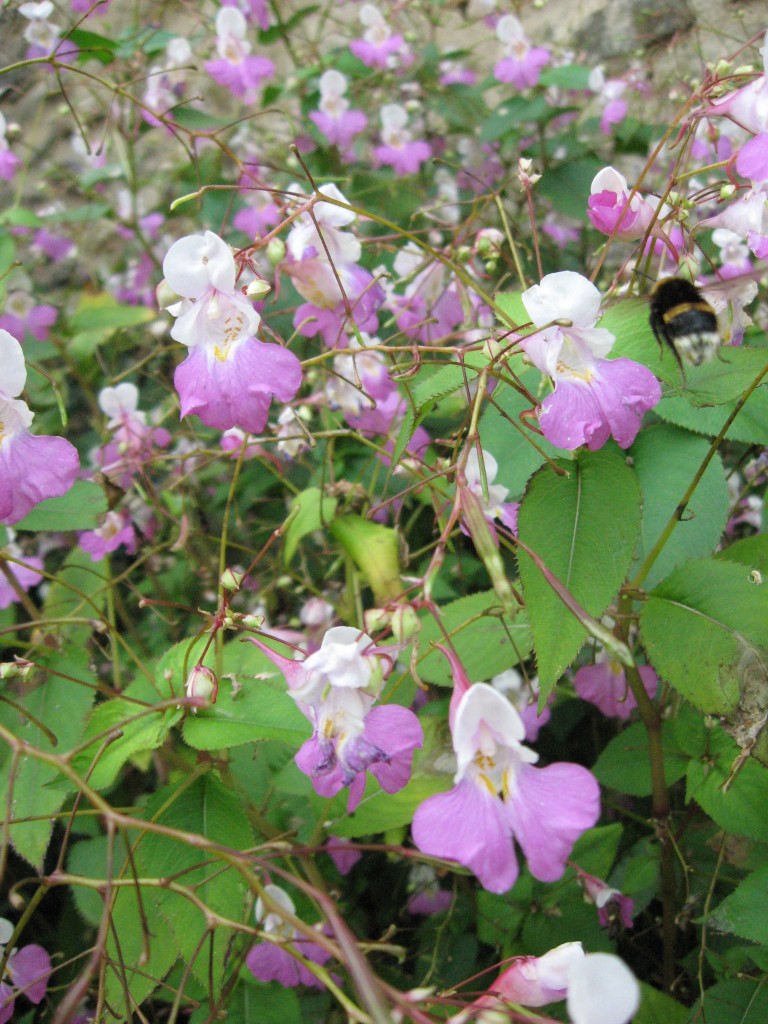
IMPATIENS BALFOURI
First spotted growing in cultivation in the front yard of a house in the Paris suburb of Aulnay-Sus-Bois, this Impatiens was truly an exciting find. We have been featuring the Native-to- North America Jewelweed (Impatiens capensis)for over a month, and this Impatiens balfouri is the French counterpart, lavishly colored in white and purple. Â Our access to the internet has been spotty at best, so further research was on hold.
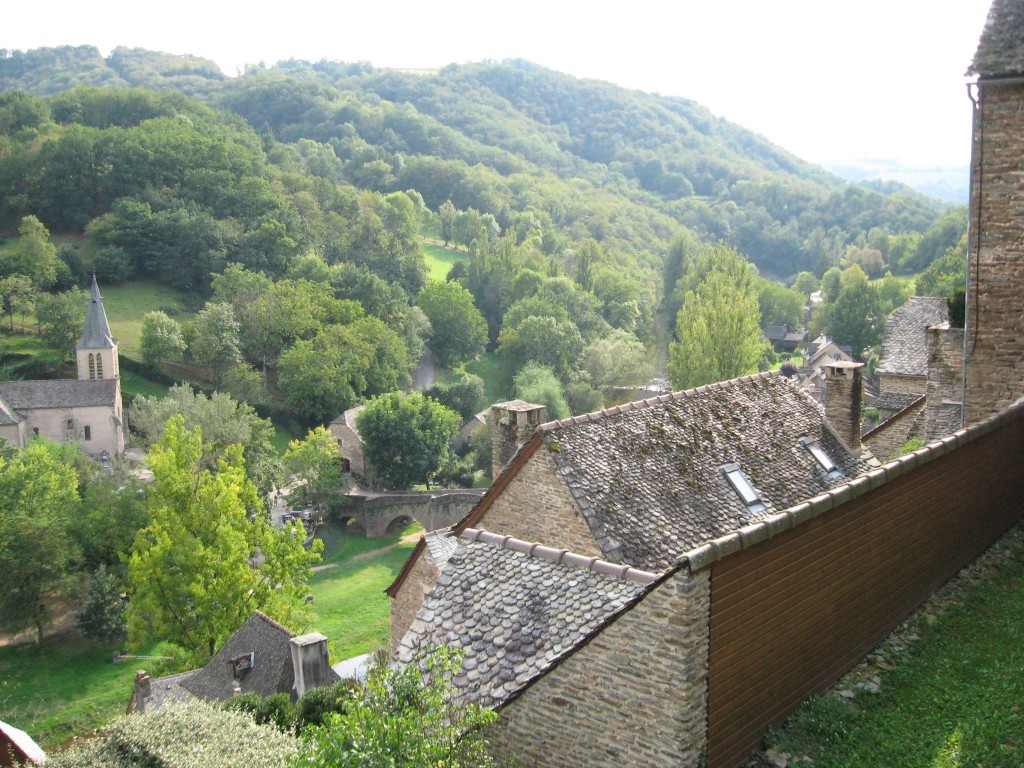
In the Aveyron region in the South of France, we found it growing in many a garden. Â In the hillside town of Belcastle, it was growing in cultivation and was attracting attention of visitors, including us. Â Just as a side note, there is a bee in the first picture. Â We have been told from multiple sources, including a beekeeper that the native bees in France are being attacked by an exotic Asian bee, something to worry about.
The leaves are much different than the Jewelweed. Like the Jewelweed, the ripe seedpods explode upon the touch, sending the seeds out and revealing the springing mechanism inside the pouch.
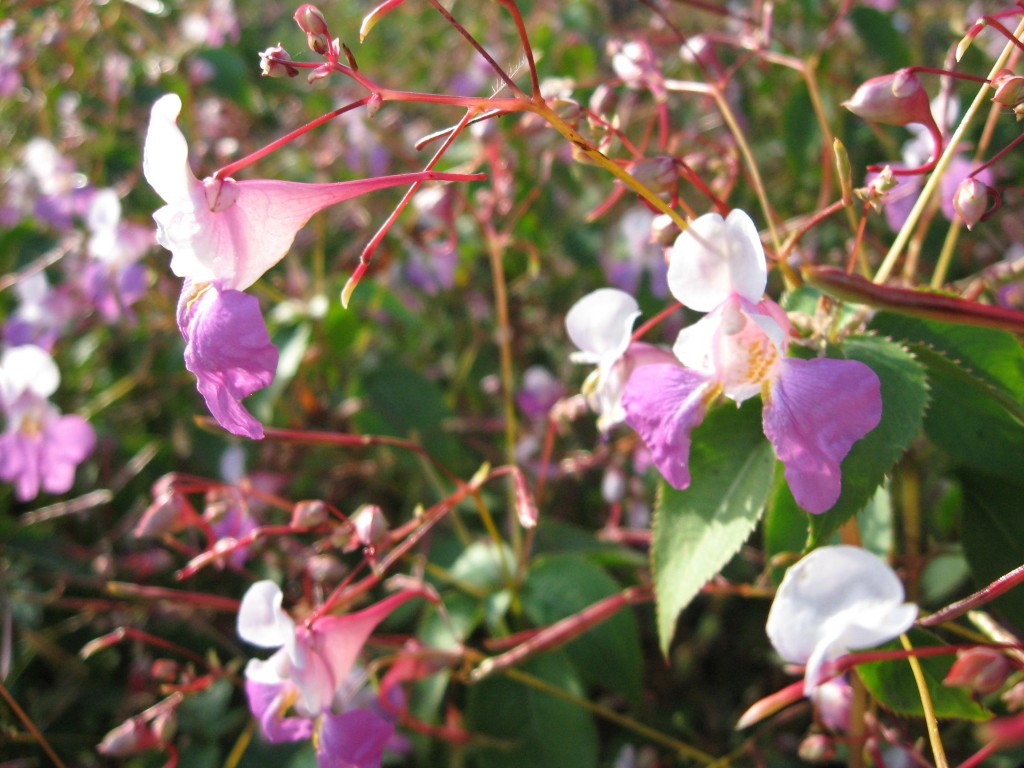
This picture above is taken in a botanical garden featuring only native plants in Aubrec. Â Here we were told of the native status of the plant. More sources will need to be consulted to confirm this. Â They had a sign with each of the 640 Â plants in the garden, featuring the latin name, and the common names, and family name! Â We were told that these were all native plants to France. We could have spent many hours there, but instead we focused on a few plants, and we confirmed a few things for the time being, such as there are native Dandelions, for example. Of course, more research needs to be done on this.
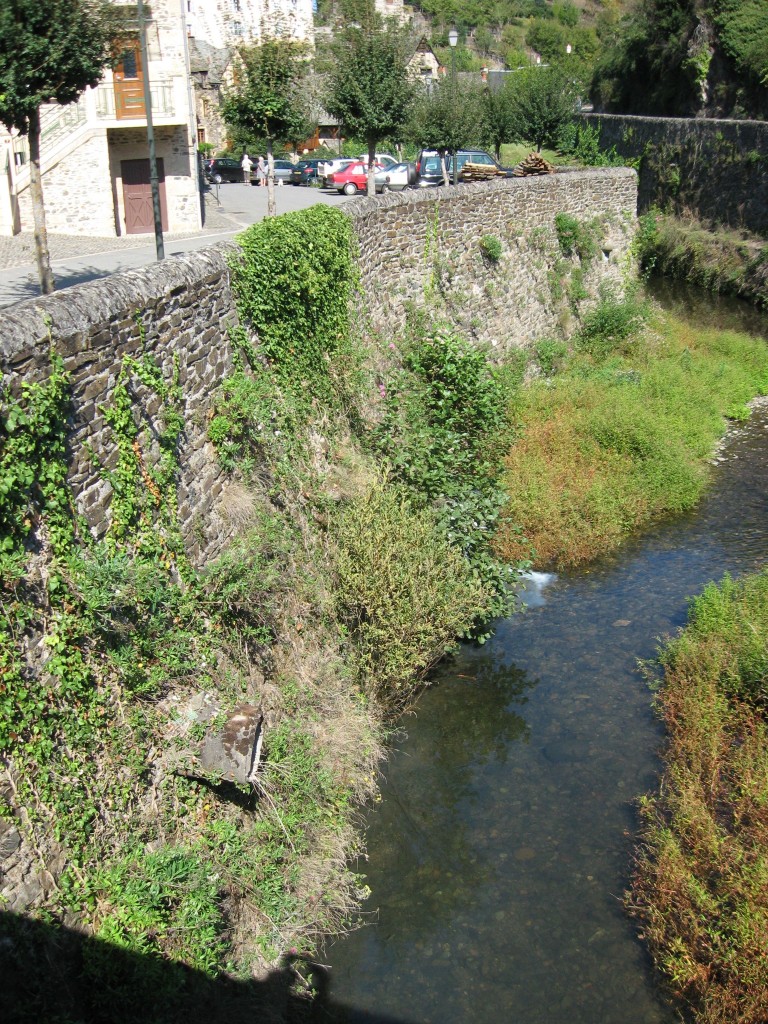
Here is a creek in Estaing, where the Impatiente de Balfour, (Impatiens balfouri) Â was blooming away along the banks at the bottom of the wall.
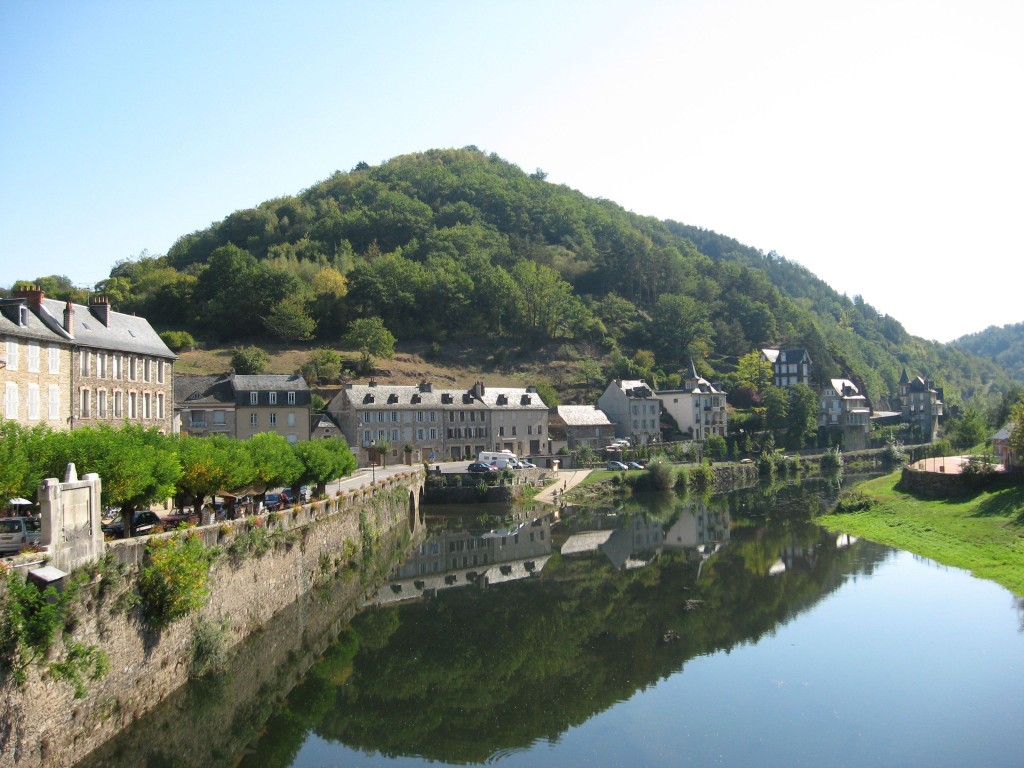
This is the Lot River flowing through Estaing. Â Â There are so many plants to view in this region, it was hard to absorb all of the information. Â We have been seeing plenty of the usual Asian invasives such as the Tree-of-Heaven and Japanese knotweed growing alongside 13th century churches. Â Pampas grass is being cultivated extensively, and it most certainly clashes with the medieval French villages. Â It has escaped cultivation and it grows like a weed along the railroad tracks all along the Mediterranean Sea inland to at least Toulouse.
It is fun seeing the European counterparts to plants and trees we are familiar with in the U.S. It gives us a sense of how the landmasses were at one time connected and how the species that were at one time the same, have evolved separately. Â Seeing the same old invasives has left an impression as well.
Being that the computer must be brought to the balcony to receive whatever internet there is floating around Rodez, France, Â or otherwise put, this electronic postcard has no more room left on it, Â au revoir.



